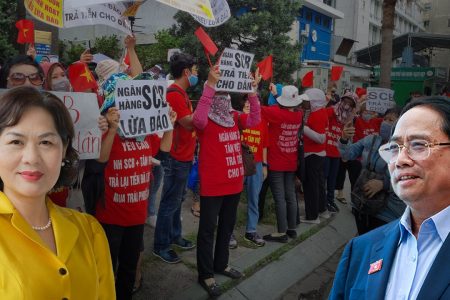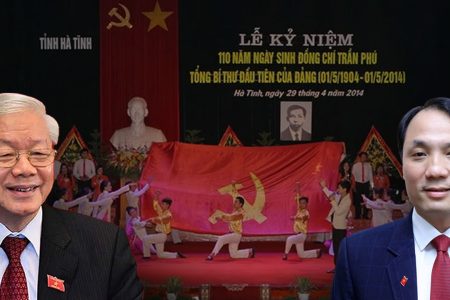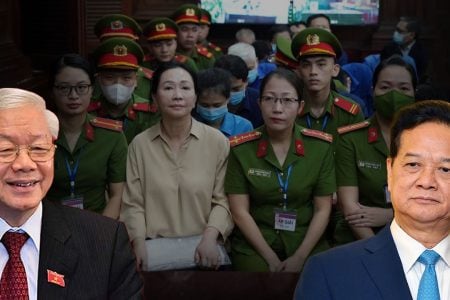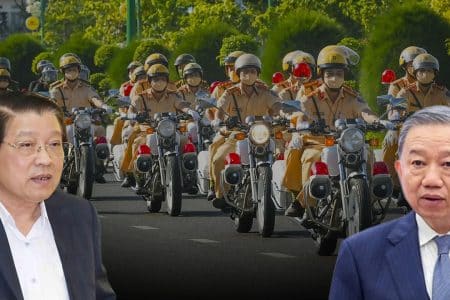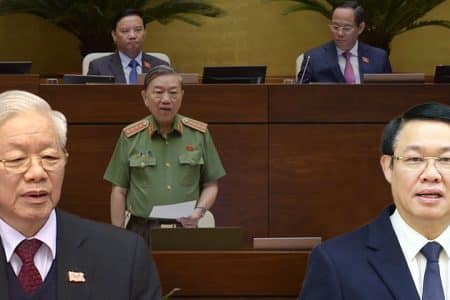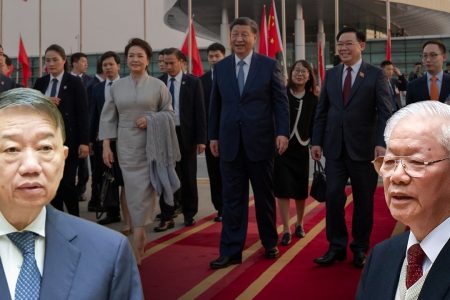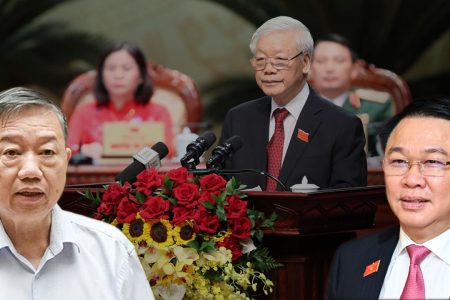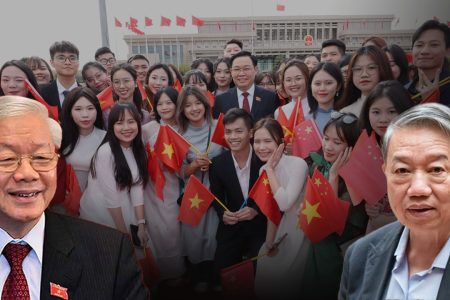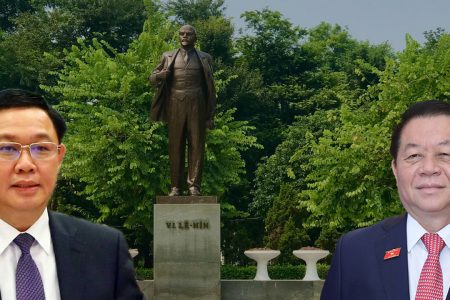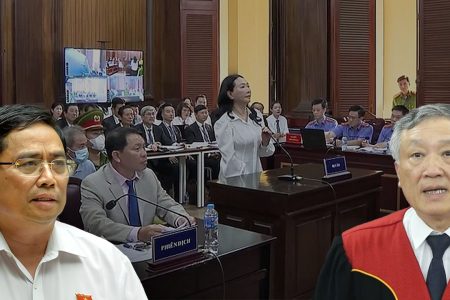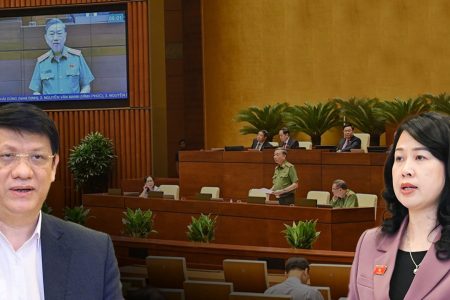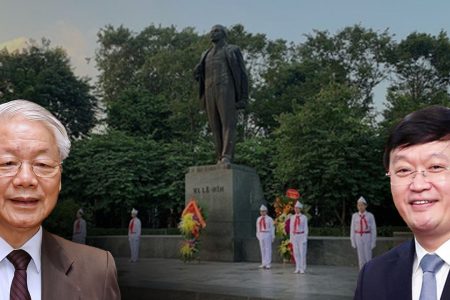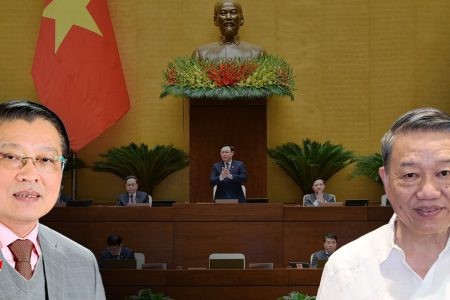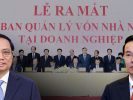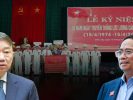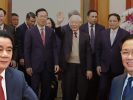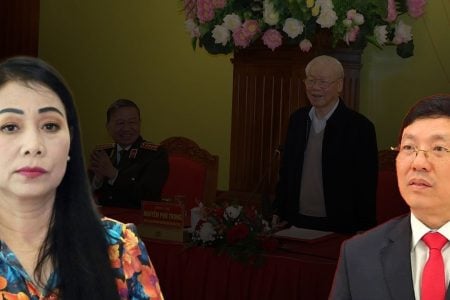
On September 5, 2022, Regulation No. 80-QD/TW was issued to reaffirm Politburo’s power in cadre work to help the ruling Communist Party of Vietnam (CPV) strengthen in the context of signs of a weak market threatening sustainable economic growth.
The market had not only “saved” the regime’s survival but also developed the country. How did Vietnam, once one of the poor, backward countries, become one of the middle-income countries in thirty years? The reliable answer is the market. However, after more than 30 years, things are changing unpredictably: The party is getting stronger but the market is weakening.
In 1945, under the leadership of the CPV, Vietnam gained independence and declared to build a modern “democratic, republic” state of the West. However, due to complicated conditions caused by wars and international communist movements, there was a regime change based on Marxist-Leninist ideology along the socialist path. It is a paradise where people “work according to their ability but enjoys according to their need,” “possession is the enemy of man” so property belongs to the whole people and the State will manage and take care of them on behalf of the people; No more greedy bourgeois to maintain the exploitative labor regime; the elites must “come out of the Ivory Tower“, practice morality and revolutionary spirit to become agents of a new and glorious future.
To turn Vietnam into this paradise, a Soviet-style totalitarian model was built and applied. And, the socialist revolution was underway: reforming land confiscation and denouncing landlords, reforming industry and commerce and bourgeoisie, nationalizing everything, etc. But instead of creating heaven on earth, these policies have turned the country into a “hell on earth.” There was a shortage of everything. A potential agricultural country did not have enough rice to eat, the distribution system from bicycle spokes to every meter of cloth, poor school facilities, poor healthcare, etc. Saigon before April 1975 was likened to the “Pearl of the Far East” and has become dilapidated… Before Doi Moi (reform), more than 90% of the population living below the poverty line, earning less than a dollar a day. The only egalitarian society is just equally miserable egalitarianism.
From the late 1980s leaders realized that this could not go on for much longer. The only way to save the dictatorship of the CPV is to move the economy to the market. The debate about who is the author of the Doi Moi policy doesn’t make much sense, when a group of farmers in Vinh Phu was “ignored” by the late Party Secretary Kim Ngoc to carry out an “undercover contract” after completing the duties of the cooperative, they would be allowed to keep any surplus for themselves and sell what they did not need. Later in the case of “breaking the fence” of the late Secretary of Long An Province Chin Can, giving up “blocking the good trade.” Such moves are risky because it is a rejection of political policies of the Communist Party’s book on socialism. But as we witnessed, the results were miraculous.
Those were important events that started the Doi Moi policy. Accordingly, sweeping economic reforms were announced, opening up to the outside world, “rolling out the red carpet” for foreign investment, and most importantly, loosening the State’s grip on people. The results of the market transformation policy have been impressive. The freer the economy becomes, the more people’s living standards improve. In the three decades since 1986 tens of millions of people have been lifted out of poverty. The appearance of urban and rural areas is more spacious.
The great lesson for transformational reform is that the above impressive achievements are gained, thanks to the Doi Moi policy of the Communist Party of Vietnam, which is also a way of saying, in fact, it is thanks to the “miracle” of the market economy and thanks to the farmers. Brave people and cadres had “risked their lives” to save themselves. Moreover, this “miracle” is helping the economy to gradually overcome the severe consequences of “macro-economic and institutional instability” due to mistakes in the “hasty” economic growth policy in recent years the 2010s when considering socialist state economic groups as the driving force.

However, these policy mistakes have been the pretext for the centralization of power by the CPV to return to the Party’s affirmative model of total leadership, in which the Government must remain under control. In recent years, the CPV has been seizing all power through the formalization of a series of regulations within the Party. Recently, Regulation No. 80-QD/TW on decentralization of cadre management and appointment and introduction of candidate cadres was issued to reaffirm the power of the Politburo and the Secretariat, making the Central Committee, nominally the highest governing body, has become the place to legitimize personnel decisions.
Since the 13th Party Congress in 2016, the policy of market transformation has been “adjusted” in the context that the campaign against “political recession” and corruption is stronger than ever. The government “creates development” for the 2016-2021 term, uses the existing apparatus to create a business environment that does not cause side effects on the regime and, it is only ‘transient‘ after instability, is gradually giving way to the regime of “strong party, strong state” starting from this 13th term. The incumbent government (2021-2026) is “running around” to implement relevant Party resolutions, both new and old. Many urgent issues, such as the amendment of the 2013 Land Law, could not be carried out without a Party resolution.
There are signs that the market is weakening. Anti-corruption exposes the people to ownership, public property is still fertile ground, but privatization has stalled. Punishment of cadres who violate Party discipline or degrade ideology causes the apparatus to become clogged and political opportunism to arise. The suppression of “disorderly capitalist expansion” and manipulation of financial markets has caused a shockwave among business investors. Promoting public investment exposes relevant policy inadequacies, weak enforcement officer capacity, and waste at relevant stages leading to low efficiency. The ant market response to the stalled bidding led to shortages of medicines, medical supplies, textbooks, etc.
The more the Party is steadfast in socialism, the heavier the mentality of waiting for “rescue” from the state. The Politburo has just decided to add more than 26,000 teachers when schools across the country complained of a long shortage. Payroll keeps expanding but cannot be “simplified.” The resignation of civil servants and medical staff in public hospitals is an excuse to ask for a salary increase or to cease self-control. The policy of autonomy for public non-business units has become “half-hearted” and is in danger of bankruptcy… In addition, the stronger the Party, the people become less and less free, forcing them to trade off their freedom for safety, and resigned.
The party’s assertion of absolute power for total control is hindering market transformation. The relationship between the Communist Party and the market is of particular interest in economic transformation reform. Theoretical schools that support state intervention in the market such as John Maynard Keynes (1883–1946) or Joseph Eugene Stiglitz (1943 -) are prioritized for applied research. However, the difference between the two regimes did not greatly support the Party’s leadership of the market without leading to instability. The more deeply the market penetrates into the economy, the more it is necessary to institutionalize principles such as private property to be established to ensure its operation and prevent negative effects. Moreover, the market requires an appropriate power monitoring mechanism such as independent decentralization, as opposed to the centralized mechanism.
The legitimacy of the Communist Party and the regime is guaranteed by economic growth driven by the market. Neglecting market dynamics is impossible, but there are growing signs that the CCP is returning to the kind of totalitarian model of the past. At that time, can the economy grow sustainably?
Thoibao.de (Translated)




